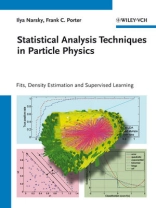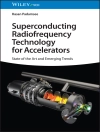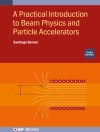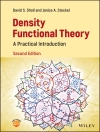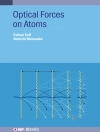Modern analysis of HEP data needs advanced statistical tools to separate signal from background. This is the first book which focuses on machine learning techniques. It will be of interest to almost every high energy physicist, and, due to its coverage, suitable for students.
Tabela de Conteúdo
1 Why We Wrote This Book and How You Should Read It
2 Parametric Likelihood Fits
2.1 Preliminaries
2.2 Parametric Likelihood Fits
2.3 Fits for Small Statistics
2.4 Results Near the Boundary of a Physical Region
2.5 Likelihood Ratio Test for Presence of Signal
2.6 s Plots
2.7 Exercises
3 Goodness of Fit
3.1 Binned Goodness of Fit Tests
3.2 Statistics Converging to Chi-Square
3.3 Univariate Unbinned Goodness of Fit Tests
3.4 Multivariate Tests
3.5 Exercises
4 Resampling Techniques
4.1 Permutation Sampling
4.2 Bootstrap
4.3 Jackknife
4.4 BCa Confidence Intervals
4.5 Cross-Validation
4.6 _Resampling Weighted Observations
4.7 Exercises
5 Density Estimation
5.1 Empirical Density Estimate
5.2 Histograms
5.3 Kernel Estimation
5.4 Ideogram
5.5 Parametric vs. Nonparametric Density Estimation
5.6 Optimization
5.7 Estimating Errors
5.8 The Curse of Dimensionality
5.9 Adaptive Kernel Estimation
5.10 Naive Bayes Classification
5.11 Multivariate Kernel Estimation
5.12 Estimation Using Orthogonal Series
5.13 Using Monte Carlo Models
5.14 Unfolding
5.14.1 Unfolding: Regularization
6 Basic Concepts and Definitions of Machine Learning
6.1 Supervised, Unsupervised, and Semi-Supervised
6.2 Tall and Wide Data
6.3 Batch and Online Learning
6.4 Parallel Learning
6.5 Classification and Regression
7 Data Preprocessing
7.1 Categorical Variables
7.2 Missing Values
7.3 Outliers
7.4 Exercises
8 Linear Transformations and Dimensionality Reduction
8.1 Centering, Scaling, Reflection and Rotation
8.2 Rotation and Dimensionality Reduction
8.3 Principal Component Analysis (PCA)
of Components
8.4 Independent Component Analysis (ICA)
8.4.1 Theory
8.5 Exercises
9 Introduction to Classification
9.1 Loss Functions: Hard Labels and Soft Scores
9.2 Bias, Variance, and Noise
9.3 Training, Validating and Testing: The Optimal Splitting Rule
9.4 Resampling Techniques: Cross-Validation and Bootstrap
9.5 Data with Unbalanced Classes
9.6 Learning with Cost
9.7 Exercises
10 Assessing Classifier Performance
10.1 Classification Error and Other Measures of Predictive Power
10.2 Receiver Operating Characteristic (ROC) and Other Curves
10.3 Testing Equivalence of Two Classification Models
10.4 Comparing Several Classifiers
10.5 Exercises
11 Linear and Quadratic Discriminant Analysis, Logistic Regression,
and Partial Least Squares Regression
11.1 Discriminant Analysis
11.2 Logistic Regression
11.3 Classification by Linear Regression
11.4 Partial Least Squares Regression
11.5 Example: Linear Models for MAGIC Telescope Data
11.6 Choosing a Linear Classifier for Your Analysis
11.7 Exercises
12 Neural Networks
12.1 Perceptrons
12.2 The Feed-Forward Neural Network
12.3 Backpropagation
12.4 Bayes Neural Networks
12.5 Genetic Algorithms
12.6 Exercises
13 Local Learning and Kernel Expansion
13.1 From Input Variables to the Feature Space
13.2 Regularization
13.3 Making and Choosing Kernels
13.4 Radial Basis Functions
13.5 Support Vector Machines (SVM)
13.6 Empirical Local Methods
13.7 Kernel Methods: The Good, the Bad and the Curse of Dimensionality
13.8 Exercises
14 Decision Trees
14.1 Growing Trees
14.2 Predicting by Decision Trees
14.3 Stopping Rules
14.4 Pruning Trees
14.5 Trees for Multiple Classes
14.6 Splits on Categorical Variables
14.7 Surrogate Splits
14.8 Missing Values
14.9 Variable importance
14.10 Why Are Decision Trees Good (or Bad)?
14.11 Exercises
15 Ensemble Learning
15.1 Boosting
15.2 Diversifying the Weak Learner: Bagging, Random Subspace and Random Forest
15.3 Choosing an Ensemble for Your Analysis
15.4 Exercises
16 Reducing Multiclass to Binary
16.1 Encoding
16.2 Decoding
16.3 Summary: Choosing the Right Design
17 How to Choose the Right Classifier for Your Analysis and Apply It Correctly
17.1 Predictive Performance and Interpretability
17.2 Matching Classifiers and Variables
17.3 Using Classifier Predictions
17.4 Optimizing Accuracy
17.5 CPU and Memory Requirements
18 Methods for Variable Ranking and Selection
18.1 Definitions
18.2 Variable Ranking
Elimination (SBE), and Feature-based Sensitivity of Posterior Probabilities (FSPP)
18.3 Variable Selection (BECM)
18.4 Exercises
19 Bump Hunting in Multivariate Data
19.1 Voronoi Tessellation and SLEUTH Algorithm
19.2 Identifying Box Regions by PRIM and Other Algorithms
19.3 Bump Hunting Through Supervised Learning
20 Software Packages for Machine Learning
20.1 Tools Developed in HEP
20.2 R
20.3 MATLAB
20.4 Tools for Java and Python
20.5 What Software Tool Is Right for You?
Appendix A: Optimization Algorithms
A.1 Line Search
A.2 Linear Programming (LP)
Sobre o autor
The authors are experts in the use of statistics in particle physics data analysis. Frank C. Porter is Professor at Physics at the California Institute of Technology and has lectured extensively at Cal Tech, the SLAC Laboratory at Stanford, and elsewhere. Ilya Narsky is Senior Matlab Developer at The Math Works, a leading developer of technical computing software for engineers and scientists, and the initiator of the Stat Pattern Recognition, a C++ package for statistical analysis of HEP data. Together, they have taught courses for graduate students and postdocs.
